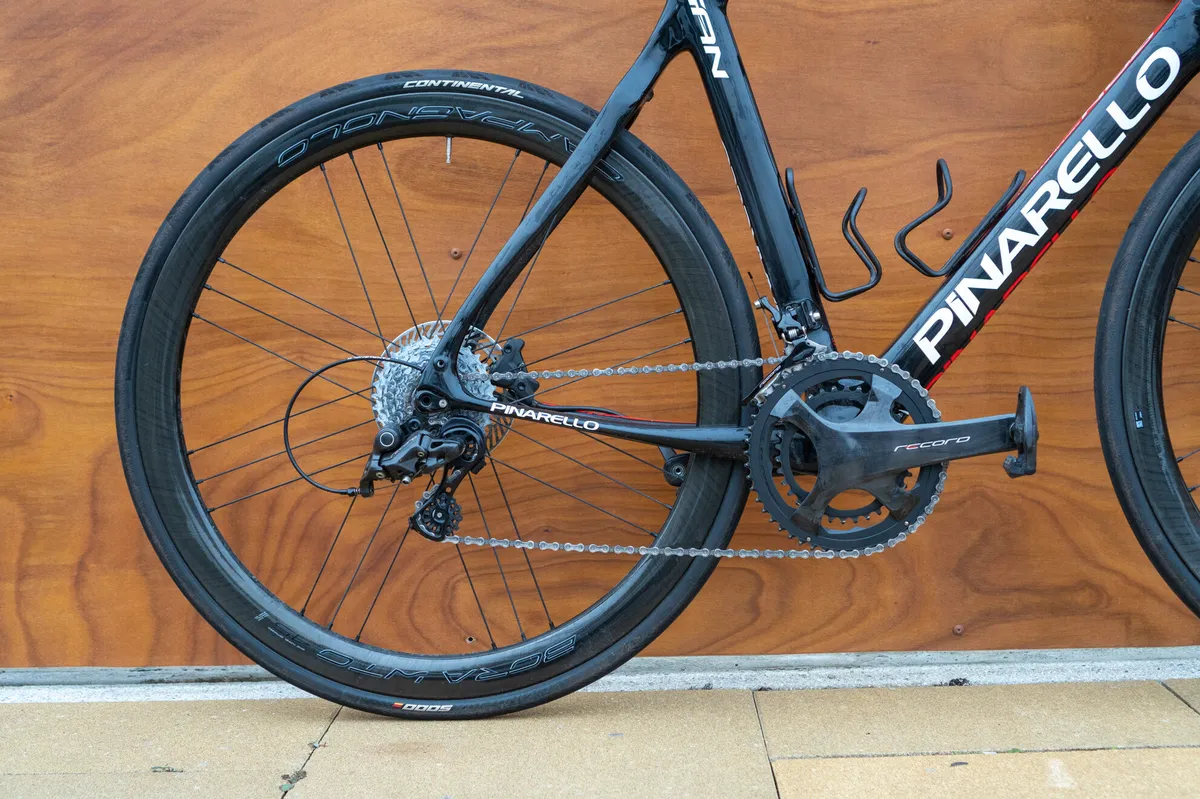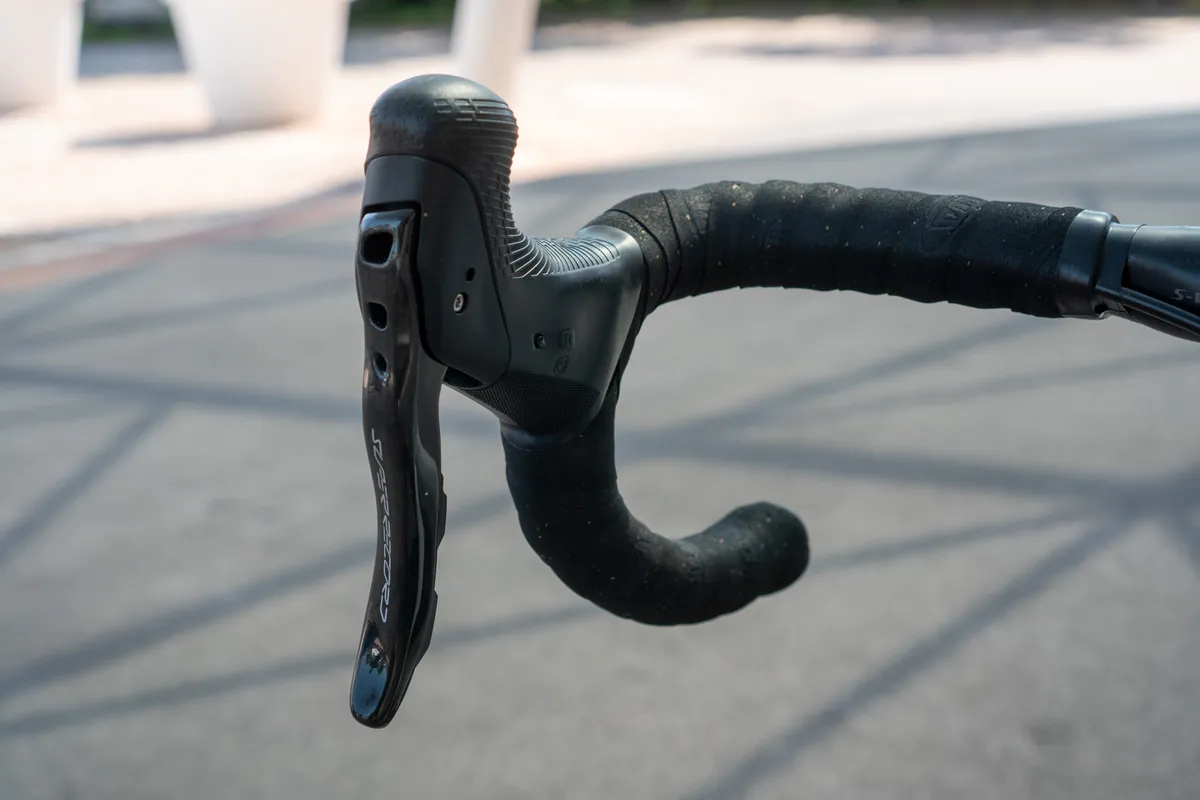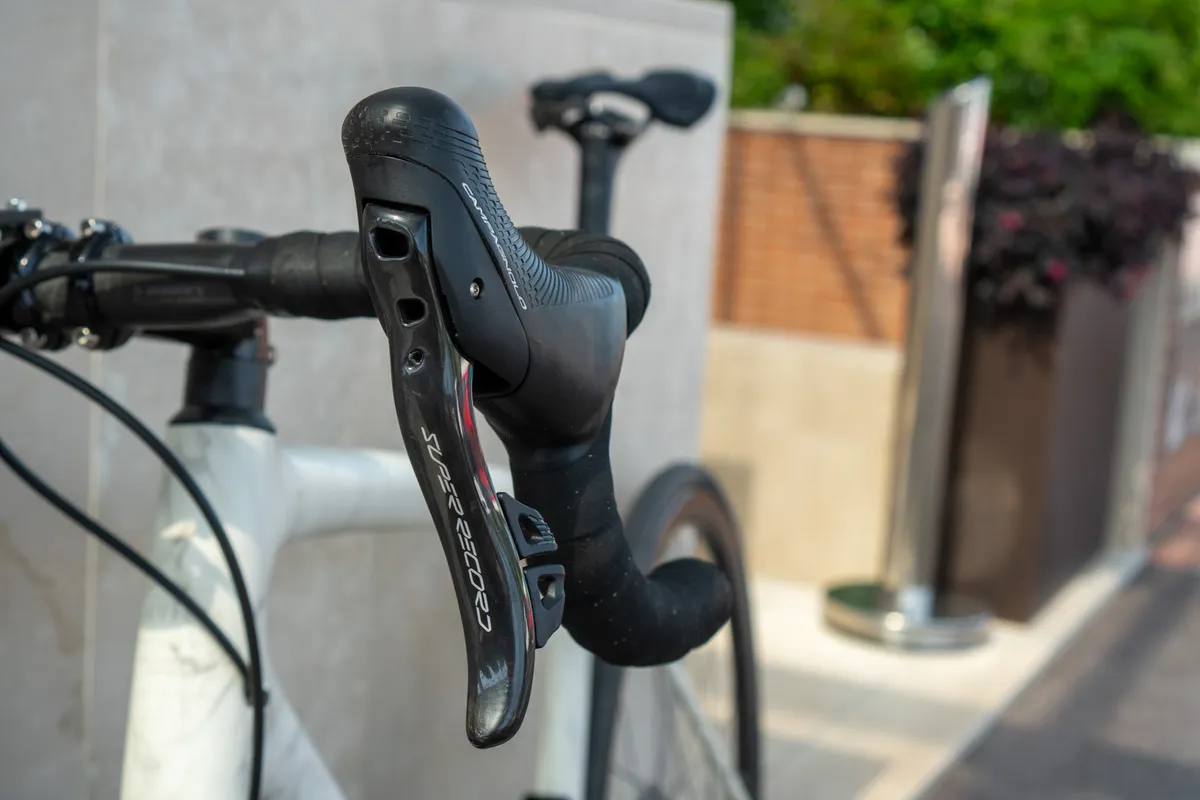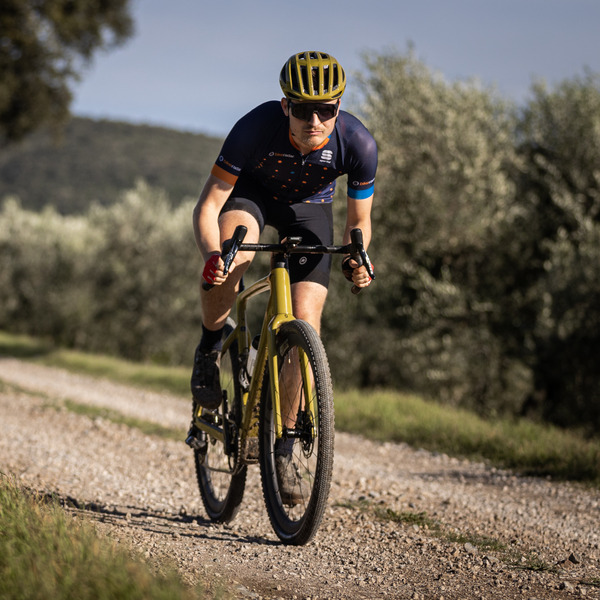While the headlines about Campagnolo’s new Super Record 13 groupset are very exciting – it’s the first 2x 13-speed option from one of the ‘Big Three’ groupset manufacturers and the lightest electronic disc brake groupset available – it’s the quiet consigning of Super Record Wireless to the history books that has me pondering.
Super Record Wireless was barely two years old, yet Campagnolo fully revamped its flagship product.
That makes Super Record Wireless one of the shortest-lived groupsets from any of the major manufacturers, with Shimano and SRAM typically following a three-to-five-year development cycle.
Whatever you may think of Super Record Wireless’ short life, I think it was a necessary step for Campagnolo to get to where it is today.
- Read more: I tested new Campagnolo Super Record 13, and Shimano and SRAM should be worried – here's why
Super Record Wireless represented too much of a change

Before Super Record Wireless, Campagnolo had launched Super Record and Record 12 in 2018, with Chorus 12 and Super Record 12 EPS following in 2019.
These were Campagnolo’s first 12-speed groupsets. They were also the platforms for Campagnolo’s first tiered hydraulic disc brakes (the brand’s also short-lived H11 disc brakes came before), something the brand was fashionably late to.
However, Campagnolo’s tardiness was for good reason – its offering was superior to both Shimano and SRAM in many ways and received much fanfare.
All was well and good. However, come 2023 when Shimano had launched its Dura-Ace Di2 R9200 and Ultegra Di2 R8100 groupsets, and SRAM had three options in its stable (Red eTap AXS, Force AXS and Rival eTap AXS) that were not only electronic but wireless, Campagnolo was once again on the backfoot.
Super Record 12 EPS, its only electronic 12-speed offering, was long-in-the-tooth by this point – its wired arrangement didn’t really set itself apart from the competition.

That was until May 2023 when Campagnolo launched its Super Record Wireless groupset, which saw the brand cast out rim brakes, up the price to a whopping £4,499 / $5,399 / €5,200 and controversially ditch the thumb shifter.
You can’t deny that it was certainly a bold swing, especially the banishing of the thumb shifter, which was one of Campagnolo’s defining features.
What’s more, when Davide Campagnolo, grandson of founder Tullio, introduced the groupset before the media at the launch, he referred to the groupset as the pinnacle of ‘sport-luxury’.
This market has been Campagnolo’s sole focus on the road, failing to launch any better-value options that would cater to more riders.

That’s despite Super Record S Wireless releasing in September 2024, a ‘special edition’ groupset that Campagnolo positioned as a slightly ‘cheaper’ $4,299 option with a minimal weight penalty over Super Record Wireless – still very much in the ‘sport-luxury’ pricing realm.
Super Record Wireless was never a proven performer

It’s almost as if Campagnolo wasn’t confident in Super Record Wireless’ performance.
The groupset launched to a divisive reaction at launch, with many criticising its price and unfamiliar shifting layout.
In my first ride review, I found a lot to like and thought the groupset shifted precisely with class-leading brakes, but I wasn’t sure on the lever ergonomics from my brief 44km test ride.
It might also indicate a lack of confidence in the long-term life of the groupset that a sample was never made available to BikeRadar for in-depth testing.
Campagnolo then found itself out of the WorldTour in 2024. While there could have been many reasons for the brand’s omission, it’s telling that it happened very shortly after Super Record Wireless’ release.
Was the groupset simply not good enough for the pros, or were there financial and commercial reasons behind Campagnolo’s one-year exit?
Super Record Wireless wasn’t all for nothing

For Super Record 13, Campagnolo has brought back a lot of fan favourites, including larger chainrings and its iconic thumb shifter.
The price has also dropped to £3,900 / $4,750 / €4,300 and while that’s far from a drop in the ocean, it’s competitive (at RRP) with similar offerings from the likes of Shimano and SRAM.
On top of righting the wrongs of Super Record Wireless’ chief complaints, the new rear derailleur is notably more svelte than its bulky predecessor.
But for all the disregard for Super Record Wireless, Super Record 13 carries many of its predecessor’s technologies over.
The new groupset develops its forebearer’s wireless logic, and speeds up the shifting quite considerably, if Campagnolo’s claims are true.

According to the brand, shifting from the top to the bottom of the cassette takes only 1.9 seconds, compared to 3.6 seconds with Super Record Wireless and 2.1 seconds going the other way, versus 3.3 seconds.
The front derailleur sees similar revisions, shedding 10g with a new carbon outer cage, altered shaping and improved shifting technology.
These incremental changes have been built on because Super Record Wireless was released, with the wireless protocol tried-and-tested for two years before Super Record 13’s release.
If Campagnolo had skipped Super Record Wireless and gone straight to Super Record 13, there wouldn’t have been the opportunity for any kinks to be ironed out.

It’s reminiscent of most first-generation electronic products – the second version is almost always better and I’m really hoping this is the case with Super Record 13. I can’t wait to ride it.
Providing its performance meets its credentials, Super Record 13 could very well be the groupset Super Record Wireless should have been. Some respect is due to a brand recognising certain failings.
I wouldn’t be surprised to see a Super Record Wireless groupset sitting next to a pair of Campagnolo Delta brakes in a museum in years to come – recorded for posterity as necessary steps on a bumpy road to success.




